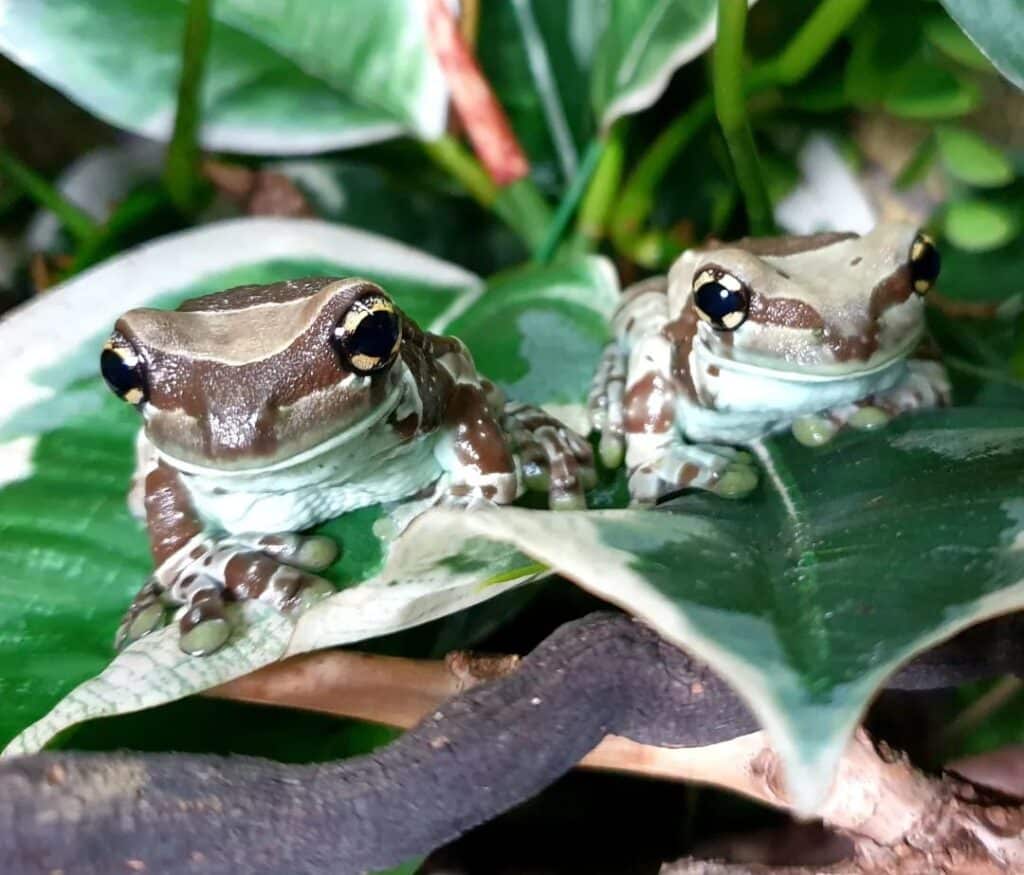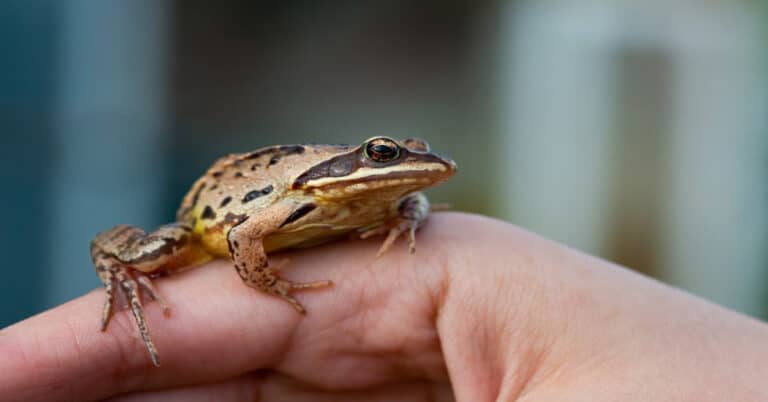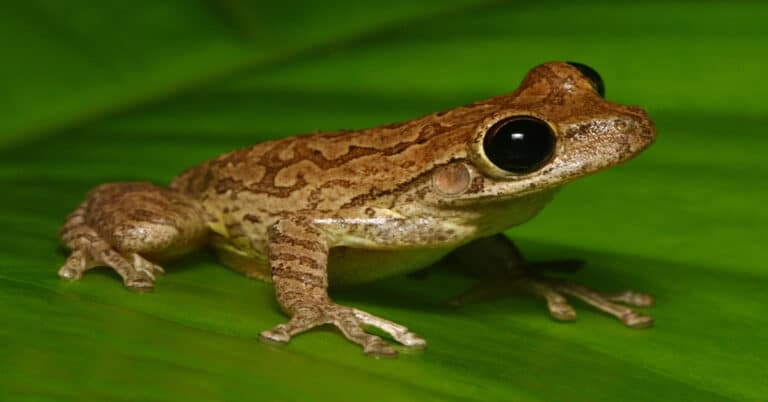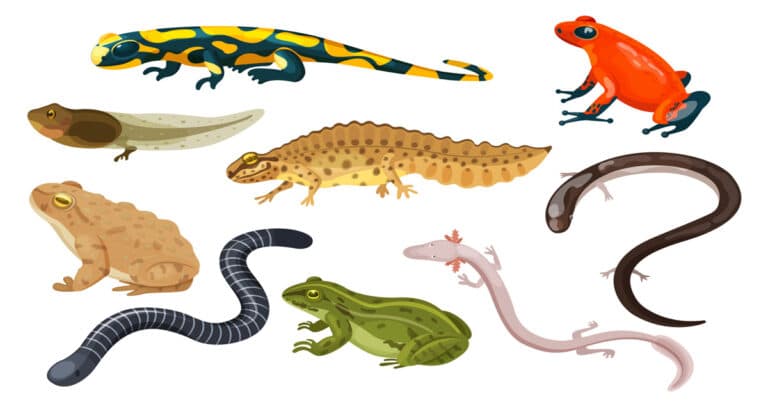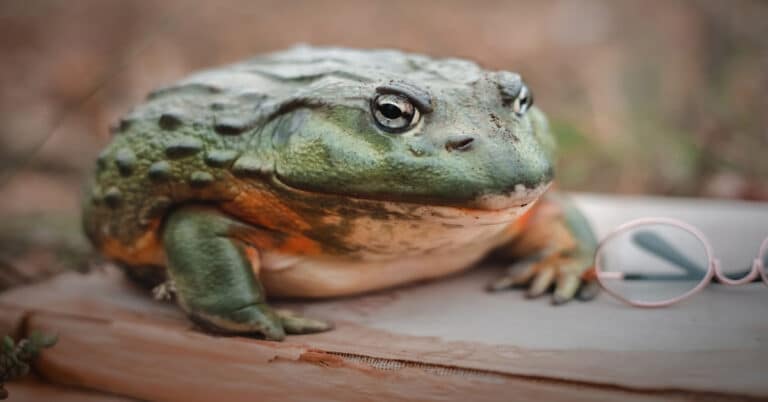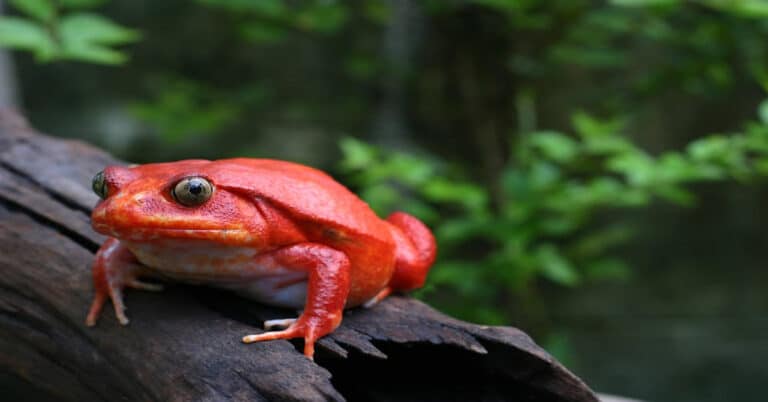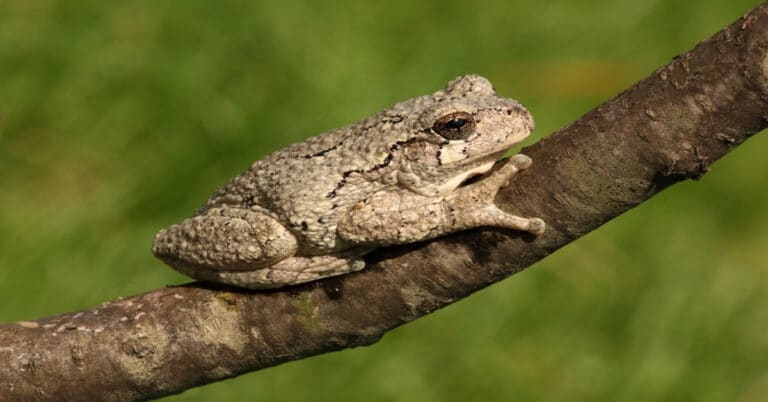Difference Between Frogs and Toads?
Did you know?: Many people mistake frogs for toads, and toads for frogs?
It’s true, and it’s easy to see why, as the two species have striking resemblances to one another. Their body structures are more or less the same, and they both spawned from the same ancestors roughly 300 million years ago.
It is thought that frogs and toads split from salamanders nearly 300 million years ago during the Carboniferous period.
About 400 million years ago the first four legged fish swam out of the water and walked onto land, breathing oxygen from the atmosphere for the very first time.
These became the ancestors of all amphibians today.
The first frog to show up in the fossil record is 250 million years old and goes by the name of Triadobatrachus. This frog had a tail, and couldn’t use its hind legs to jump like modern frogs and toads of today.
Sadly, it’s difficult to tell exactly where they went from here, and it’s also unknown when frogs separated from toads. All we know is that they did.
So, what are the differences in frogs and toads?
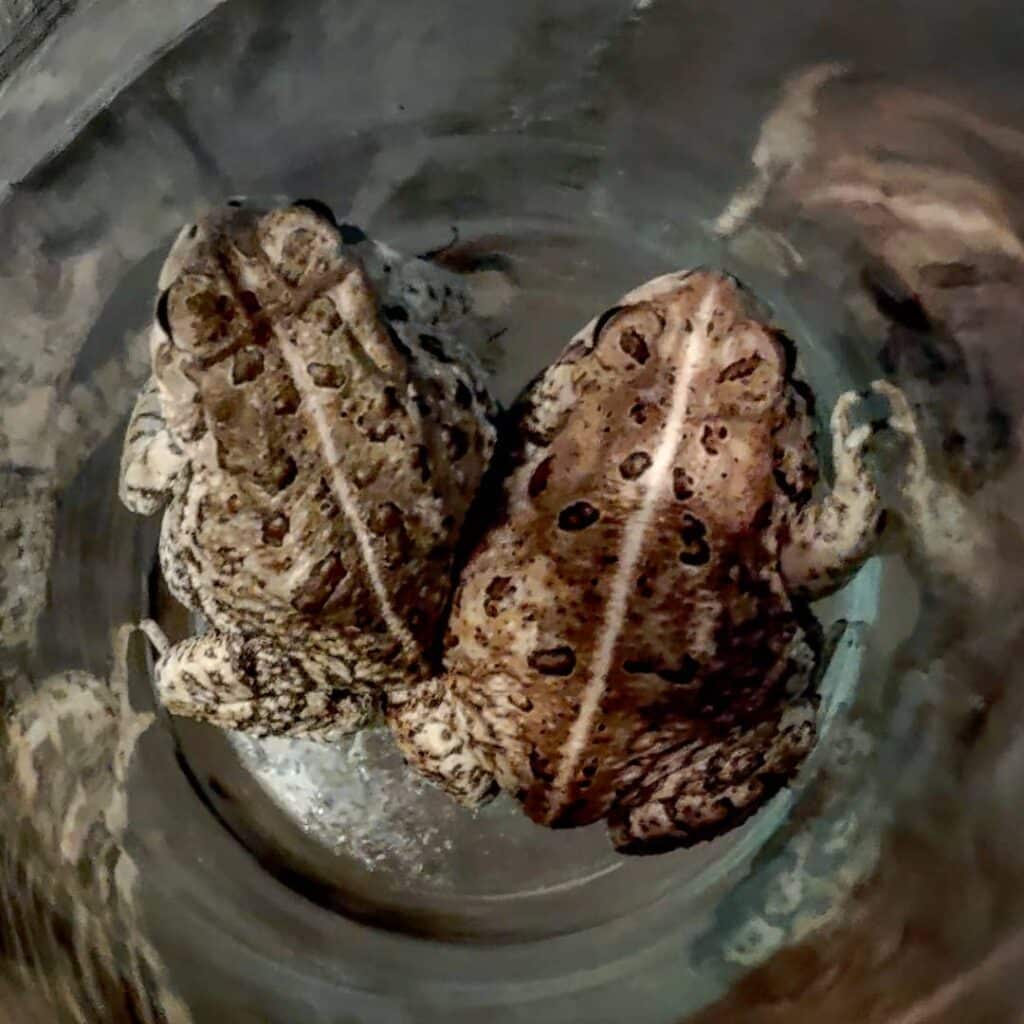
Well, for starters, toads are a type of frog, though not all frogs are toads, much like the difference between turtles and tortoises.
Frogs and toads are both amphibians, meaning they’re both cold blooded, and they both absorb water through their skin.
Of all amphibians in the world today, frogs and toads account for 88% of them, with over 6,000 species of frogs and 300 species of toads.
The beginning of life for frogs and toads is quite the same, as both are born in water, and both begin their lives as tadpoles.
Once their eggs hatch, they’ll turn into tadpoles within 3-to-12 days, depending on the species and sub-species.
It takes about 14 weeks or four months for them to transform into small frogs or small toads, and it can take toads anywhere from two-to-three years to reach sexual maturity, while it can take frogs up to four years to become fully mature.
Toads will lay a string of eggs in a nearby body of water, though there are a few species of African toads that incubate their young themselves inside their bodies before birthing live little toadlets. And they only return to the water to give birth, before going back to their homes on land.
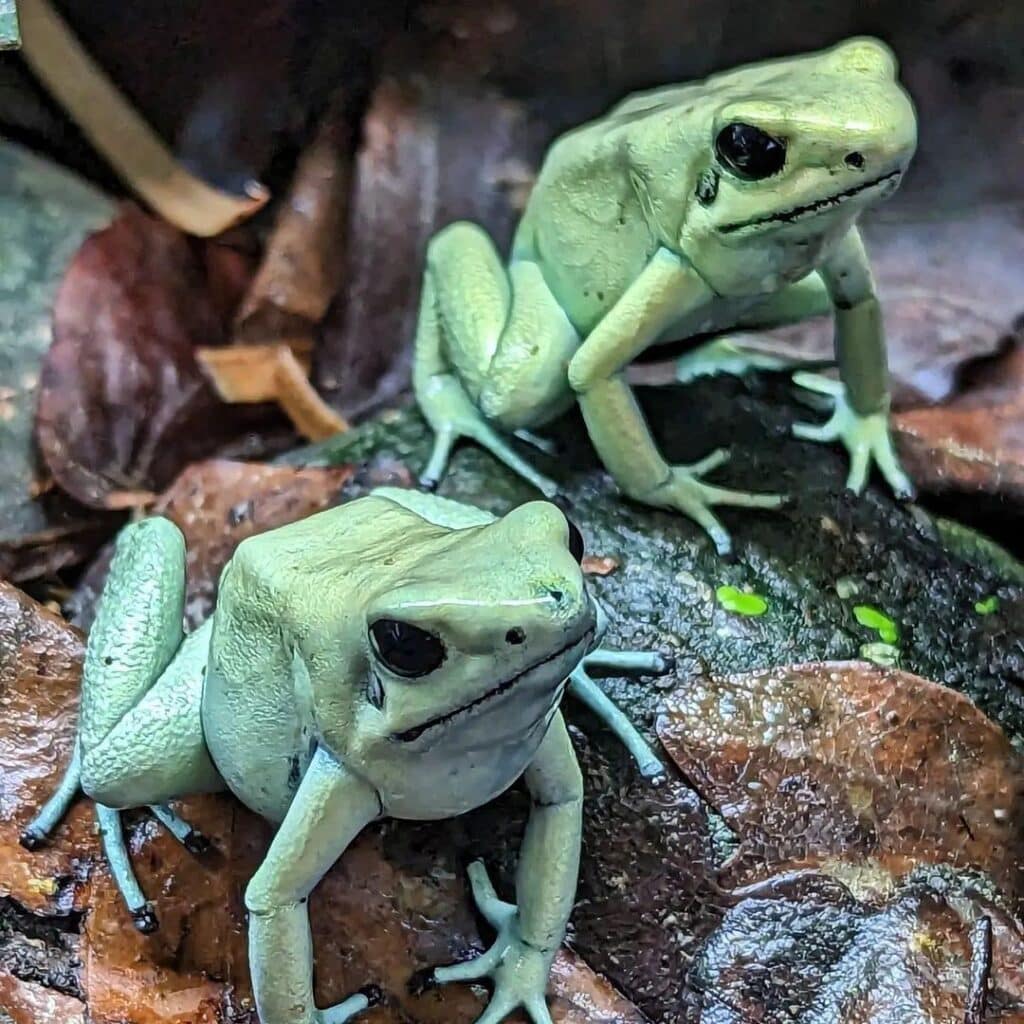
Frogs on the other hand lay big clusters of eggs in their own respective bodies of water, though some species of tree frog will birth little miniature adults without them having to go through the tadpole stage.
Interestingly enough, there is one species however that has taken a much different evolutionary approach than any of the others, the Surinam toad.
The Surinam toad is actually a frog, and you’ll see this mistitling between frogs and toads a lot. Fire-bellied toads are also frogs for instance.
Nonetheless, Surinam toads, like the aforementioned African toads above, birth live young. Only they lose their outer layer of skin in the birthing process as they birth them through their backs.
It looks kind of like a honeycomb that little tiny frogs come out of, it’s wicked.
Both frogs and toads are carnivorous as adults, feeding on a wide variety of insects and small vertebrate prey, though they’re herbivorous as tadpoles, feeding on algae.
Frogs have maxillary teeth, which is a row of very small teeth lining their upper jaw, and they also have a pair of vomerine teeth on the roof of their mouths.
On the contrary, something that may come as a surprise to you is, toads have no teeth at all.
The vast majority of frogs and toads are nocturnal, as they’re active mostly at night, though there are a select few species that are primarily active during the day such as a number of poison dart frogs.
Another difference between frogs and toads is their body shapes.
Though they are more or less built the same, frogs generally have slightly longer bodies than toads, and their legs are also longer, giving them the ability to leap larger distances.
Toad legs on the other hand are better designed for hopping and crawling.
The feet of toads are also much different than that of frogs; toads have clawed fingers at the end of their feet and hands that are meant for digging, while frogs either have webbed feet for swimming or sticky pads at the end of their toes for climbing vertically.
That brings us to their habitats, which is perhaps the biggest difference between frogs and toads.
Most frogs are aquatic in nature, though some are arboreal, meaning they live in trees. Arboreal frogs only live in tropical climates, as they wouldn’t be able to breathe without a constant water source.
Toads on the contrary are terrestrial creatures that live on land.
Frogs can breathe through their lungs and through their skin, which is quite remarkable when you think about it. As long as there’s enough oxygen in the water they’re inhabiting, they’ll be able to breathe under water.
Toads also have this feature, though they’re much better at using their lungs to breathe through their noses.
Then the next key difference between frogs and toads is their skin; frogs have moist, slimy skin, while a toads skin is dryer and has a more warty-like texture.
This would of course be due to their habitats and how they breathe.
Frogs must have wet skin or else they cannot breathe, and they’re incredibly prone to drying out, while toads have evolved to breathe regardless of the fact that their skin is dry.
Toads also have parotid glands behind their eyes, which contain poison to aid them in warding off predators. Frogs do not have these glands. Instead, frogs have better eyesight and a wider spectrum of vision that allows them to see in a full 360 degrees, allowing them an easier way to escape predators.
Both frogs and toads are capable of swimming, though toads aren’t particularly strong swimmers, and both are quite territorial, which makes them cannibalistic at times.
That is one of the reasons both frogs and toads are declining at a rapid rate, they can’t keep from eating one another. The other reasons would be due to pollution and manmade structures.
We humans have been polluting this planet for some time now, and many animals have suffered the consequences of it. Due to both animals absorbing everything around them through their skin, the chemicals we use on a regular basis extend to their environments, killing them off rather quickly once they’re exposed.
That doesn’t even mention all the roads, buildings, and parking lots we make in their homes, forcing them to either die or move elsewhere.
Should their environment not be polluted by us, the lifespan of frogs and toads may surprise you.
Though it differs of course depending on the species as well as their environment, toads can live up to 10-to-15 years in the wild and up to 40 years in captivity.
Frogs on the other hand live an average of 2-to-10 years in the wild, and sometimes upwards of 30 years in captivity, though they rarely exceed 20 years.
If you enjoyed this piece, feel free to share it on social media!

I started writing in the fourth quarter of 2018. I wrote solely about MMA and boxing up until October of 2022, where I began writing about animals; primarily dangerous, venomous species. They’ve always fascinated me. Considering, my goal is to make a living by teaching people about these wonderful creatures. You can check out my Facebook page, where every article I’ve ever written currently sits, or you can check out my Twitter page, where I’ve shared all of my animal pieces to date.


